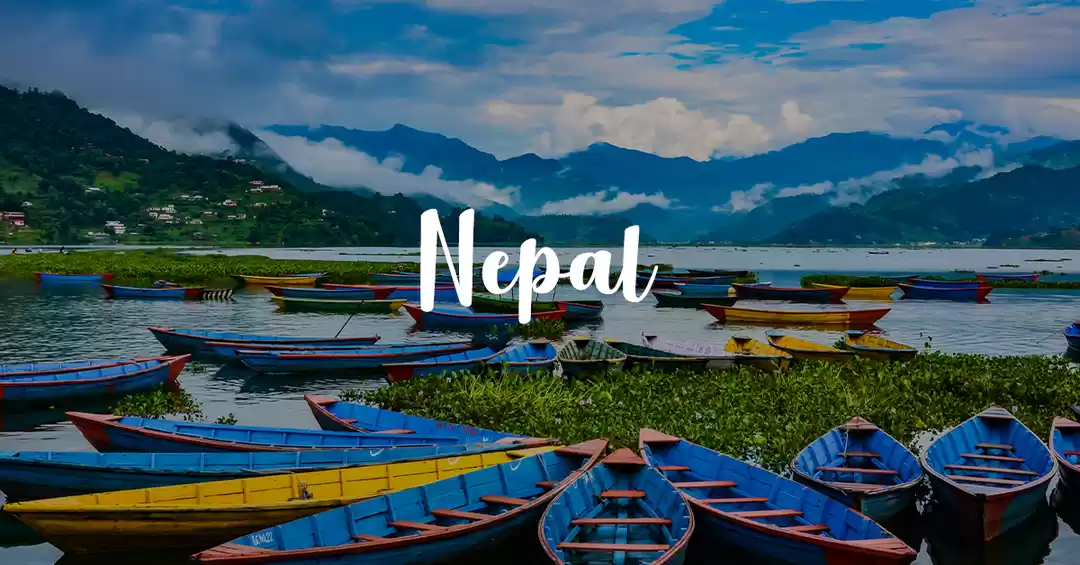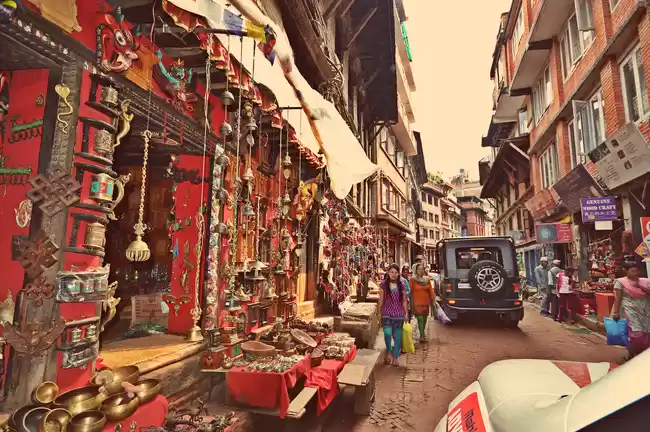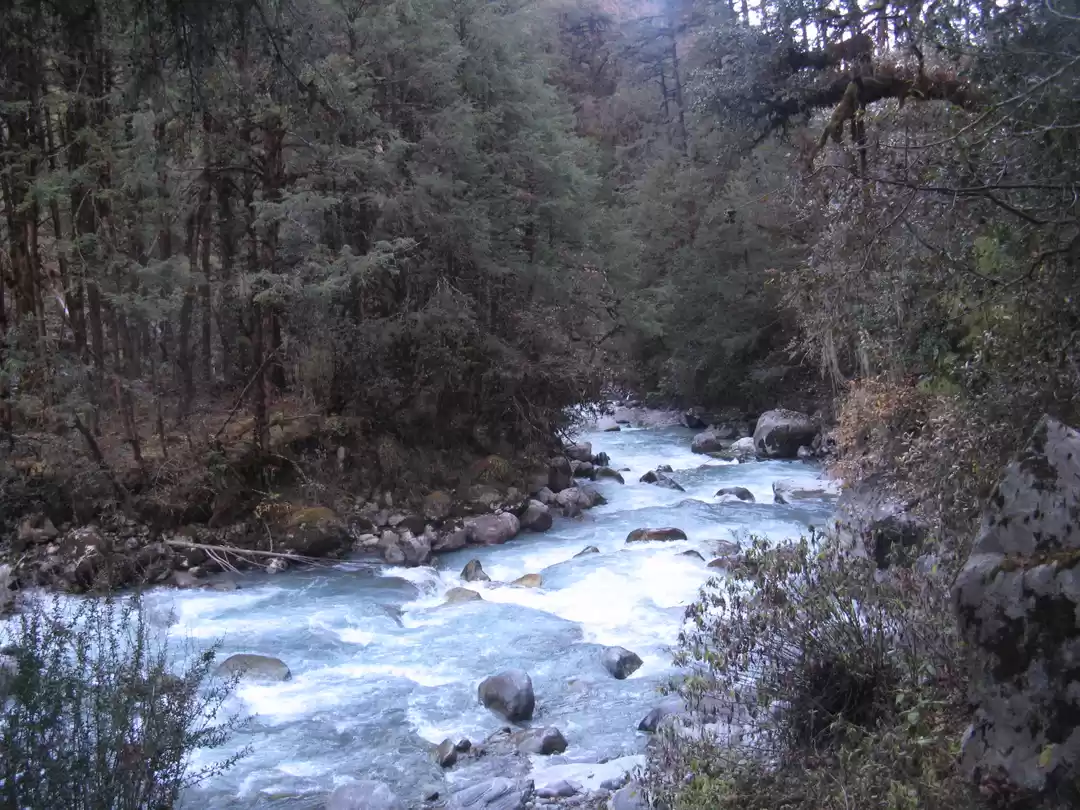The country of Nepal has shared its culture, history and people with India for centuries. The exchange of invaluable narratives of Nepal stops when we decide to actually visit the place. Instead of delving into the country as the home of Himalayas and cradle of Hinduism, Indian travellers restrict themselves to the cheap thrills of casinos and unimaginative itineraries.
Once you do end up exploring, researching and reading up on this fascinating country, the amount of neglect it has suffered at the hands of authentic travellers would be appalling. To get you started, here is a list offbeat things you can do to experience the heart of Nepal's relationship with culture, nature and adventure.
Find your way to the Yeti Scalp of Khumjung
In 1960, when Desmond Doig, a British journalist, and Edmund Hillary were passing through the Khumjung Village, they stopped over at the home of an old woman and found, what was speculated to be, a Yeti scalp. Yeti is an ape-like creature who is said to live in the high Himalayas. Scientists have long maintained that this Yeti, roughly translated in English as Abominable or Dreadful Snowman, doesn't exist but locals continue to hold its legends as authentic stories integral to their culture. In 1960, Hillary and Doig somehow managed to convince the village people to take this hide-like scalp and have it inspected abroad. Though it later proved to be a hide from a goat-like Himalayan antelope, you can still visit the monastery it is placed in.
Know before you go: The village of Khunjung is just 137km from Kathmandu. The local bus network in Nepal is quite efficient and you will easily get a bus till the Sagarmatha National Park. From here the village is a short trek away. To see the images of the Yeti scalp, visit this page.

Do a temple tour of Dhulikhel on foot
Dhulikhel is a beautifully located village in Nepal as it provides a panoramic view of over 20 peaks, including Mt. Annapurna (8,091 m), Mt. Ganesh Himal (7,429 m), Mt. Langtang (7,234 m), Mt. Phuribichyachu (6,637 m), Mt. Gaurishanker (7,134 m) and Mt. Lhotse (8,516 m). Along with being blessed with the best view of the high Himalayas, Dhulikhel is also home to a number of ancient Hindu temples. Once you reach the place, move towards the Old Town, which narrowly escaped the 2015 earthquake, and explore its religious history on foot.
Know before you go: Buses from Kathmandu leave for Dhulikhel every morning, and it will take 6-8 hours to reach. Out of the best Newari temples that you can visit, put these on the top of your list: Kali Temple, Shiva Temple, Bhagwati Shiva Temple, Gita Temple and Hari Siddhi Temple.
Explore the offbeat Helambu Valley on a week-long trek
The high mountains of Nepal are home to several tribes whose culture and way of life have stood the test of time. The Yolmo Tribe, indigenous to East Himalayan region, reside in the Helambu Valley and the best way to find your way to them is to trek! This trek is practical, not too challenging and can be completed in under a week. The beautiful trail is dotted with rhododendron trees and covers the best views of the valley, which includes a peak into the neighbouring valley, which will be Tibet!
Know before you go: The trek is of an easy grade, but it is always preferred if the trekkers are physically fit and active. The trail starts from Sundarijal near Kathmandu and many trekking companies in the city organise it for affordable prices. The best time to take go on this week-long trek is from September to December.

Pray with monkeys at the Swayambhunath Monkey Temple
The legend of the Swayambhunath Temple goes back 1,500 years when Manjushree, the bodhisattva of wisdom, was raising the temple hill from ground and the lice from his hair transformed into monkeys. Now, this temple complex is home to hundreds of monkeys who are considered holy. Despite this peculiar feature, the temple is one of the greatest and holiest Hindu shrines in Nepal and has been a place of worship since 5th century BCE. To reach this iconic shrine of colourful prayer flags and playful monkeys, you will have to climb 366 stairs, so make sure you visit during either early morning or evening.
Know before you go: The temple is a popular day visit from Kathmandu. You can reach the complex however it suits you, via bus, taxi, bike or even on foot.

Trek to the Rinchenling Gompa before it disappears
Halji village, perched in the isolated Himalayan valley of Limi, is home to Rinchenling Gompa. This ancient monastery was founded by Rinchen Zangpo ( a pioneer, almost considered a deity in Tibetan Buddhism, in the translation of Buddhist texts to Tibetan language) and was a prime pilgrimage shrine for Tibetans until the borders closed. Halji is a typical remote Himalayan village, running on solar energy for electricity and cow dung for heat. The glacial lake situated above Halji flooded in 2011, causing some irreversible damage to the Rinchenling Gompa as well as the village. This cultural icon and the second oldest monastery of Nepal is under constant threat of complete destruction, so do visit the place before it's too late.
Know before you go: The Rinchenling Gompa is not exactly the most accessible place. To reach Hajli, you will have to trek for around 5 days from Simikot. Plenty accommodations and homestays are available in Halji. Do read Stumpy's Blog and find our more about the trail that passes through the village.

Volunteer as an artist in residence with the Marpha Foundation
The remotely developed expanses of Himalayas provide a great variety of volunteering opportunities. One such organisation, situated in Marpha village of Thak Khola Valley, offers a chance to artists and creative thinkers to be 'Artist in Residence' and help blossom the imagination of the village kids. If you are an artist from any field such as visual arts, theatre, dance, creative writing and music, and love working with kids, then submit your application to the Marpha Foundation. The Artist in Residence programme requires a minimum of 2 weeks stay and can go on for as long as 9 weeks, depending on how much time you can commit.
Know before you go: The registration fees for the 'Artist in Residence' programme is $75, and you can find out the weekly dates by dropping a query here. To find more about the programme, check out this page and to read up on the Marpha Foundation, visit their official website.

Jump from the highest bungee jumping point in Asia
Nepal boasts the highest bungee jumping point in Asia and The Last Resort is the only adventure company that organises it. The bridge, suspended 160m above ground, passes over a scary tropical gorge and gives a great view of the Bhote Kosi River.
Know before you go: A bungee jump costs up to $90. And a bungee jump combined with a swing costs $113. Check out the official website of The Last Resort to know more.

Ride a bike to the Tibetan border
The bike ride from Kathmandu to Tibetan is a sensory overload of undulating mountains and changing landscapes. There are several other places you can take your bike to in Nepal such as Dhulikel and Nagarkot, but the most interesting road trip would be to the Tibetan border in Gyirong/Kyirong. The previous drive-able border was in Zhangmu, which became inaccessible after the 2015 earthquake. The Gyirong Port is now the official overland gateway for tourists travelling between Nepal and Tibet.
Know before you go: The average rate of renting a 220cc motorbike such as Pulsar or Avenger is Nrs 1500 (INR 940 approx). Despite the proximity between Nepal and Tibet, it is quite difficult to enter the country. If you want to take your adventure a step further and actually cross over to Tibet, then book a tour in advance, preferably with an agency based in Lhasa.
































